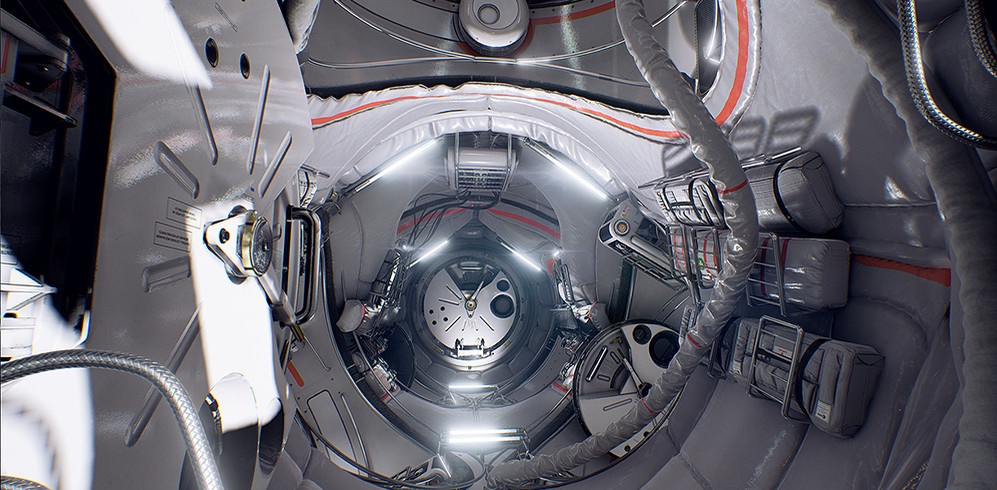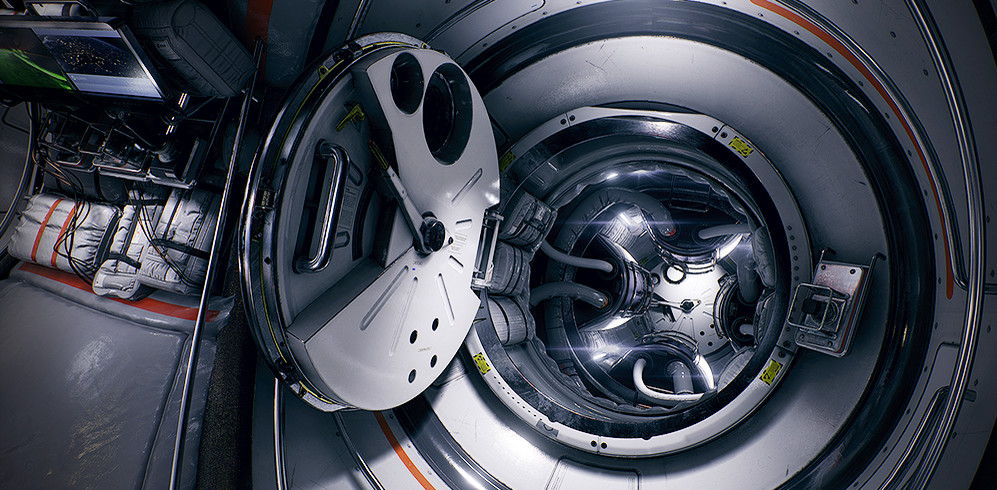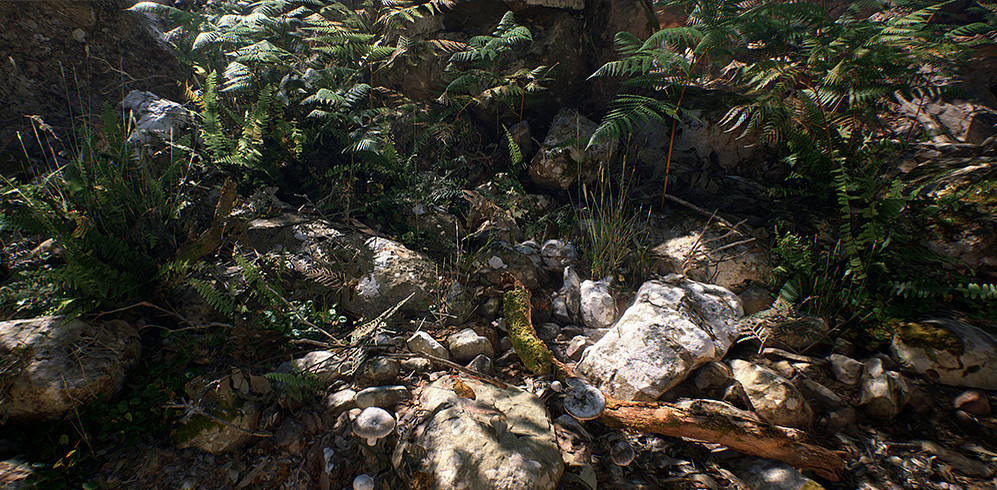Gravity and ADR1FT. There, I got the two most obvious comparisons out of the way immediately. Those are clearly the biggest points of comparison for Homebound, an upcoming first-person VR adventure game from solo indie developer Wiktor Öhman at Quixel. This short interactive VR experience follows a similar story of space-based isolation and disaster, but it resolves itself much more quickly than either the aforementioned film or VR game, clocking in at just around 30 total total minutes.
Öhman sent me an alpha build of the game to try out for myself as a seated experience on the HTC Vive using the motion tracked controllers.
By design, Homebound was created to fulfill a very specific purpose: to provide a short, immersive experience inside a VR headset that tells a chilling story full of exhilarating set piece moments. The Steam page itself even describes it as having no more than 15-30 minutes of gameplay. To that end, Homebound appears to succeed.
You move around the environment using the trigger button on the right-handed Vive’s motion controllers, similar to how a thruster would operate. The trigger on the left-handed controller reverses your movement. Change direction by rotating around and changing where you’re looking. My right hand also has a flashlight, while my left includes a scanner and some other tools. The game supposedly will support the Oculus Rift, as well as both keyboard/mouse and gamepad controls, but the build I tried was only playable using the Vive and its motion controllers.
The actual first scene begins inside of a fairly standard space station — full of real-life inspirations — with a cold, GLaDOS-like robotic voice speaking to you. She tells me how to move around the environment and helps me get my bearings. I don’t want to spoil too much of what happens next, but suffice it to say that I probably should have listened to her and not press the big red button. But alas, I’m a fidgeter.
https://www.youtube.com/watch?v=IIx2lW7E2W0
What Öhman seems to accomplish in Homebound, even more so than is achieved in ADR1FT in my opinion, is nail that sense of lonely isolation you’d expect to feel in space. The slow drifting controls and lack of needlessly complex mechanics allow you to focus on the experience itself and not cloud your perception.
Having a clear mind is important because once things go south, and they will go terribly south, the intensity found in the gameplay trailer is revealed, I caught myself holding my breath in anticipation on more than one occasion. I’ve been known to grind my teeth and stick out my tongue in a distorted face of concentration during the most exhilarating moments in a videogame, and Homebound felt no different in that regard.
While I wished the controls felt a bit more precise, I appreciated the sense of immersion. I don’t know if I will ever actually make it to space in my lifetime, but science fiction and pop culture has me convinced that something will go terribly wrong if I do, so I appreciate experiences like Homebound preparing me for the absolute worst.
It also needs to be stated that the entire experience, from start to finish, is absolutely gorgeous. By focusing on such specific moments and scenes, instead of trying to create a sprawling environment to explore, Öhman was able to pack a ton of detail into each portion of the small environments instead.
He created the short app in Unreal Engine 4 “completely from scratch” by himself. That even includes “everything from the art and sound to the scripting,” Öhman elaborated in an email to Upload. “I had no prior experience with creating gameplay or scripting before I started working on this, so I had to learn everything from scratch. I decided to use Unreal Engine 4 because of Blueprints, UE4’s visual scripting editor.”
Although, it’s worth stating that Quixel does have a bit of a pedigree as well, described as being “known for making computer graphics tools for the AAA game industry as well as firms like NASA, Tesla and ILM,” on the Steam page. Öhman himself admits to having 9 years of game art experience.
Regardless, for something created in just a few months’ time, Homebound is a beautiful peak into the frantic and thrilling possibilities of VR experiences that lay aside gameplay mechanics as a secondary feature to an otherwise immersive, narrative adventure.
While brief, I am excited to see what Öhman and Quixel do next.
Homebound is now available on Steam for Oculus Rift, HTC Vive, and OSVR at the price of $8.99 with a 20% launch discount.































